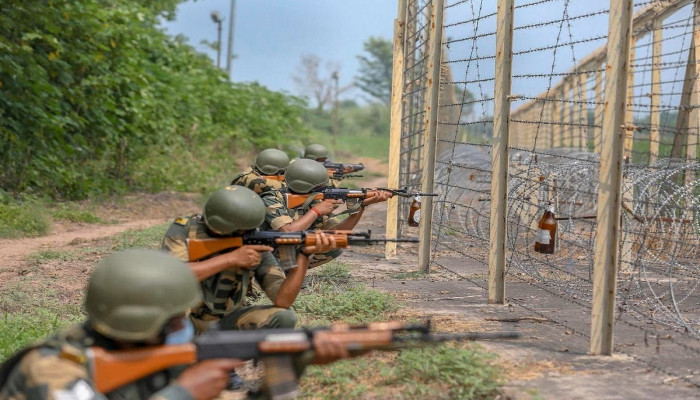India deploys BSF, ITBP, and SSB to guard Siliguri Corridor in response to China's moves in Bhutan
- In Military & Strategic Affairs
- 04:11 PM, Aug 07, 2023
- Myind Staff
Amidst of ongoing border standoff with China in eastern Ladakh, India has initiated plans to reinforce security in the strategically vital Siliguri Corridor, often dubbed the 'Chicken Neck.' This corridor holds paramount importance as it serves as the connecting link between the northeastern states and the rest of the nation.
According to sources within the defense and security establishment, the Asianet News reported that the decision involves deploying troops from the Central Armed Police Forces (CAPFs). This deployment aims to ensure enhanced security coverage along the entire span of the corridor, even during periods of peace. The reasoning behind this move is the identification of the corridor as an area prone to vulnerability, thereby necessitating heightened protection of both vulnerable areas and points.
"In this direction, a decision has been taken and further discussions are underway. Initially, three border guarding forces --- Border Security Force (BSF), Indo-Tibetan Border Police (ITBP), and Sashastra Seema Bal (SSB) -- will be deployed at the identified vulnerable areas and vulnerable points,” the sources added.
In response to a series of strategic developments, India is considering deploying troops from the Central Armed Police Forces (CAPFs) to secure the vital Siliguri Corridor, a thin strip of land in West Bengal, amidst the ongoing border standoff with China along the Line of Actual Control (LAC). This corridor holds immense geostrategic significance for New Delhi, measuring merely 20-22 kilometers at its narrowest point and sharing borders with Nepal, Bangladesh, and Bhutan.
China's construction of dual-use border villages within Bhutan's territory, coupled with the initiation of boundary talks between Beijing and Thimphu to address their longstanding border dispute, has compelled India to contemplate bolstering its security presence. The Indian authorities are particularly focused on safeguarding the Siliguri Corridor, which is deemed vulnerable due to its crucial connectivity role.
China's actions in recent years, characterized by a methodical encroachment along Bhutan's borders through a 'salami slicing' approach, have raised concerns. Beijing's engagement with Bhutan in boundary negotiations aims to attract the tiny nation away from New Delhi's influence.
In 1996, China offered a 'package deal' to Bhutan, suggesting the relinquishment of claims on a 495 sq km area in the 'central sector' in exchange for 269 sq km in the 'northwest,' which encompasses regions like the Chumbi valley, Doklam, Sinchulumpa, Dramana, and Shakhatoe. Despite China's overture, Thimphu declined the proposal under the persuasion of New Delhi then.
China's aspirations include gaining control over the Jhampheri Ridge and the Doklam area, strategically enlarging its Chumbi Valley. This expansion would grant China unhindered mobilization capabilities and additional access routes in potential military confrontations with India. Presently, China has bolstered its connectivity within the deep areas of the Chumbi Valley in the Tibet Autonomous Region, a proximity that raises concerns for India's security and interests in the region.
Eastern Army Commander and now Indian Army chief Gen Manoj Pande had in 2021 said, "We are looking at a whole of nation approach, which not includes the armed forces, but also the administrations of states around the Siliguri Corridor and central agencies. The effort is to work together to deal with this threat in normal times along with the hybrid threat when it manifests and during conflict conditions." He further said that a joint coordinating centre under the Army has proved to be effective to coordinate the actions of all agencies that work in the region.
In 2017, during the Doklam standoff, Chinese road construction in Bhutan faced Indian resistance. The 73-day impasse ended after Modi-Xi phone talk. Recent exercises near the corridor, including 'Trishakti Prahar' and 'Vayu Prahar,' tested the joint operational readiness of the Indian Army, Air Force, and CAPFs.
Image source: AsiaNet News







Comments